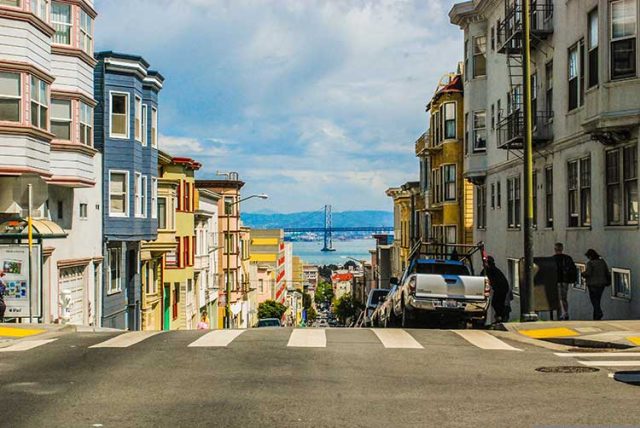It’s been exhausting. You look at the numbers for San Francisco’s residential real estate, and it’s not that bad. Prices are down from last year, but not enough to suggest there’s been any kind of correction. Inventory is down, but it’s been down for years.
Still, a confluence of challenges, after years of a red-hot market, followed by a pandemic, followed by record high prices, followed by rising interest rates, followed by uncertainty, has drained buyers, real estate agents, and possibly sellers, alike.
“In June there were no atmospheric rivers, and it was nice to have a month with no natural disasters, bank failures, or major tech layoffs,” said Matt Fuller, cofounder at Jackson Fuller Real Estate, only partly in jest. He was quite serious though when he asked rhetorically, when all is said and done, “Is the juice of San Francisco worth the squeeze?”
New listings in June were down compared to the previous year. Single family home listings fell to 168, down 35.4 percent from June 2022, while condo listings fell to 234, down 31.2 percent from June of last year.
What’s more, overall new listings this spring were just way down compared to previous years. It’s as if the pipeline had simply short-circuited. That has to be discouraging. Fewer listings mean fewer sales, and that makes making a living in real estate very difficult.
LESS IS MORE?
Why fewer listings? According to the San Francisco Business Times, potential sellers are reluctant to put their homes on the market for fear of how much higher interest rates would add to the cost of a replacement.
And now there’s a new challenge. Insurance companies are beginning to bail on California.
According to the Business Times, the loss and scaling back of major home insurance carriers in California this year has been significant. Farmers Insurance — the state’s second-largest homeowners carrier — said on July 3 that it would now limit the number of new homeowners’ insurance policies it issues in the state.
The move comes after State Farm and Allstate recently cited rising costs of rebuilding and the increasing risk of wildfires for their decisions to cease issuing new policies in California. AIG and Chubb — which often covered luxury homes for a premium — have also pulled coverage for some customers over the past two years.
This means real estate agents have to spend more time chasing after insurance brokers, hoping to locate one willing to write a policy for their buyers. There are fewer homes for sale, and according to Fuller, the homes that do sell involve more uncertainty. Contingencies and cancellations have returned to the marketplace because of concerns about appraisals, insurability, and more.
ON THE OTHER HAND
And yet prices remain high. According to the San Francisco Association of Realtors, the median price for a single family home in San Francisco in June was $1,700,000, down 11.6 percent from June 2022. The median price for a condo was $1,218,274, down just 5.5 percent from the previous year.
In June, the median number of days on market for all homes sold in San Francisco was 22. Of course, that number was much lower just a few years ago during the city’s red-hot real estate market. But 22 days isn’t really bad. In the past, in most markets, in most years, it could take a month or two or even three to sell a home.
San Francisco homes are still selling over their list price. In June, 71.9 percent of single family homes sold over their list price, but yes, that was down 18.7 percent from the previous year. 41.1 percent of condos sold over their list price, down 31.7 percent from June 2022. For both categories combined, 54.5 percent of all homes in San Francisco sold over their list price.
The demand is still there for homes in good condition and in good locations, when presented and priced well. But the vibe seems different.
“An inescapable frustration seems to have imbued life in San Francisco,” said Fuller. “People feel frustrated and want change: They are tired of vandals and vagrants on sidewalks, police that are absent or too aggressive, ineffective city leadership, the expensive cost of living, and the continuing closure of longtime favorite restaurants, breweries, and shops.”
It all adds up to an exhausting real estate market. But perhaps there is hope in a famous proverb, dating back to at least 1650, that says, “It’s always darkest before the dawn.”
All eyes are on September, when real estate market activity typically picks way up. It will be interesting to see what happens this year.
Feedback: [email protected]





